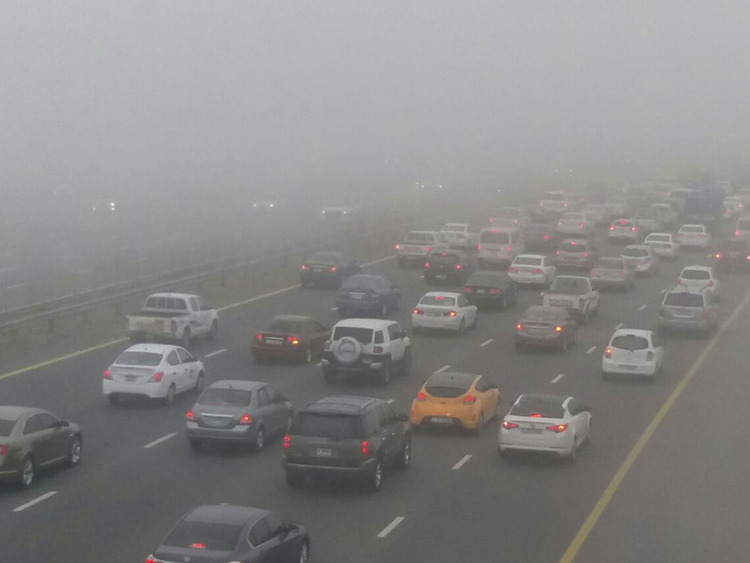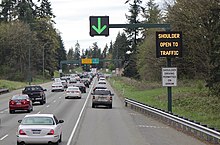 As the winter season is approaching, more accidents occur because the weather creates conditions that are unsafe for drivers to travel from one destination to another. During the months of October through February we experience more fog than usual because of the amount of water vapor in the air. Depending on the thickness of the fog, it causes severe accidents because drivers are not able to see vehicles ahead of them. For example, in late December a multi-vehicle pileup occurred in Lubbock, Texas.
As the winter season is approaching, more accidents occur because the weather creates conditions that are unsafe for drivers to travel from one destination to another. During the months of October through February we experience more fog than usual because of the amount of water vapor in the air. Depending on the thickness of the fog, it causes severe accidents because drivers are not able to see vehicles ahead of them. For example, in late December a multi-vehicle pileup occurred in Lubbock, Texas.
According to CNN, on the day of the accident Lubbock was under a dense fog advisory warning causing a mile or less of visibility. The accident started as a two-car crash on Highway 84. As police were investigating the car crash, an 18-wheeler jackknifed and slid into the car crash scene to avoid colliding with a red SUV that changed lanes in front of the 18-wheeler. As the 18-wheeler lost control of the truck, the truck swerved off of the road, rolled on its side, and struck several vehicles as the truck was coming to a stop. Multiple officers and individuals were on the side of the highway when the 18-wheeler was coming to a stop, but luckily, the truck only hit two individuals. The individuals were taken to a nearby hospital for treatment. Furthermore, CNN reported that in total, there were a total of five crashes that involved four semi-trucks and four smaller vehicles.
As stated above, fog can cause more accidents because of the lack of visibility. The Texas Department of Transportation reported a statistic in 2016 that revealed 2,430 reported accidents due to fog. Among those accidents, there were 45 fatalities. Although fog is a hazard that is out of our control, there are some skills one can keep in mind as they maneuver their vehicle through these special weather conditions.
 ,719 people were killed and 2.3 million were injured.
,719 people were killed and 2.3 million were injured. Fort Worth Injury Attorney Blog
Fort Worth Injury Attorney Blog


 When an individual travels to another state for work or to visit their family, there may be a need to rent a car for their stay. There may be a few concerns as one rents the car like the insurance coverage for a possible car accident.
When an individual travels to another state for work or to visit their family, there may be a need to rent a car for their stay. There may be a few concerns as one rents the car like the insurance coverage for a possible car accident. 
 As businesses expand, they look for new ways to transport their product or deliver a service to others. Thus, they hire drivers to drive their vehicles to do so. Sometimes when a driver is in route, they get into a car accident that may or may not be their fault, but when it is the employee’s fault there is a certain law that may apply to a defendant’s case. This law is called vicarious liability or respondeat superior.
As businesses expand, they look for new ways to transport their product or deliver a service to others. Thus, they hire drivers to drive their vehicles to do so. Sometimes when a driver is in route, they get into a car accident that may or may not be their fault, but when it is the employee’s fault there is a certain law that may apply to a defendant’s case. This law is called vicarious liability or respondeat superior. As the spring season approaches so do the outside activities. The warm weather allows us to resume activities the cold weather is not welcoming to. Many individuals like to take a bicycle rides with a friend, significant other, or they like to take the opportunity to teach their kids how to ride a bike. It’s a great hobby to enjoy with others, but when one decides to take routes that involve motor vehicles the bike ride can become more susceptible to collision. Therefore, a bike rider must know certain laws and rules when one decides to encounter routes with cars.
As the spring season approaches so do the outside activities. The warm weather allows us to resume activities the cold weather is not welcoming to. Many individuals like to take a bicycle rides with a friend, significant other, or they like to take the opportunity to teach their kids how to ride a bike. It’s a great hobby to enjoy with others, but when one decides to take routes that involve motor vehicles the bike ride can become more susceptible to collision. Therefore, a bike rider must know certain laws and rules when one decides to encounter routes with cars.  One of the most important tools we have to utilize on our cars are the lights, which is a tool some people do not use correctly. Almost everyone does well at using their lights at night, but when sunset begins or when the weather is gloomy some drivers forget to use their lights properly. This neglectful act can lead to serious vehicle accidents. According the Texas Transportation Code, there is a statute that states,
One of the most important tools we have to utilize on our cars are the lights, which is a tool some people do not use correctly. Almost everyone does well at using their lights at night, but when sunset begins or when the weather is gloomy some drivers forget to use their lights properly. This neglectful act can lead to serious vehicle accidents. According the Texas Transportation Code, there is a statute that states,  Am I allowed to drive on the shoulder of a highway?
Am I allowed to drive on the shoulder of a highway? Throughout out time driving, emergency vehicles will pass us so they can tend to an accident or a vehicle with car problems. Unfortunately, many people forget what the proper thing to do is when an emergency car passes us as we are driving. In Texas, the law says that when this situation arises the driver is supposed to pull-over to the right-hand side of the road and stop. This law is easy to follow if the emergency vehicle is traveling the same direction as the driver. However, drivers become confused on what the proper course of action is when the emergency vehicle travels in the opposite direction. To clear up the confusion, regardless of which way the emergency vehicle is traveling, the driver should still pull-over to the right-hand side of the road and stop. The Transportation Code specifically addresses this in a statute described below.
Throughout out time driving, emergency vehicles will pass us so they can tend to an accident or a vehicle with car problems. Unfortunately, many people forget what the proper thing to do is when an emergency car passes us as we are driving. In Texas, the law says that when this situation arises the driver is supposed to pull-over to the right-hand side of the road and stop. This law is easy to follow if the emergency vehicle is traveling the same direction as the driver. However, drivers become confused on what the proper course of action is when the emergency vehicle travels in the opposite direction. To clear up the confusion, regardless of which way the emergency vehicle is traveling, the driver should still pull-over to the right-hand side of the road and stop. The Transportation Code specifically addresses this in a statute described below.  When an individual is in an accident, the person may feel conflicted about how to proceed with a personal injury case if they believe they were not at fault. Depending on the severity of the accident, it is recommended to seek legal counsel. The thought of filing a lawsuit can be stressful or intimidating for a person, but it is essential to consult with an attorney to learn the value of your case. One may wonder what is discussed in a consultation and how the attorney determines the case’s value.
When an individual is in an accident, the person may feel conflicted about how to proceed with a personal injury case if they believe they were not at fault. Depending on the severity of the accident, it is recommended to seek legal counsel. The thought of filing a lawsuit can be stressful or intimidating for a person, but it is essential to consult with an attorney to learn the value of your case. One may wonder what is discussed in a consultation and how the attorney determines the case’s value.  As the winter season is approaching, more accidents occur because the weather creates conditions that are unsafe for drivers to travel from one destination to another. During the months of October through February we experience more fog than usual because of the amount of water vapor in the air. Depending on the thickness of the fog, it causes severe accidents because drivers are not able to see vehicles ahead of them. For example, in late December a multi-vehicle pileup occurred in Lubbock, Texas.
As the winter season is approaching, more accidents occur because the weather creates conditions that are unsafe for drivers to travel from one destination to another. During the months of October through February we experience more fog than usual because of the amount of water vapor in the air. Depending on the thickness of the fog, it causes severe accidents because drivers are not able to see vehicles ahead of them. For example, in late December a multi-vehicle pileup occurred in Lubbock, Texas.